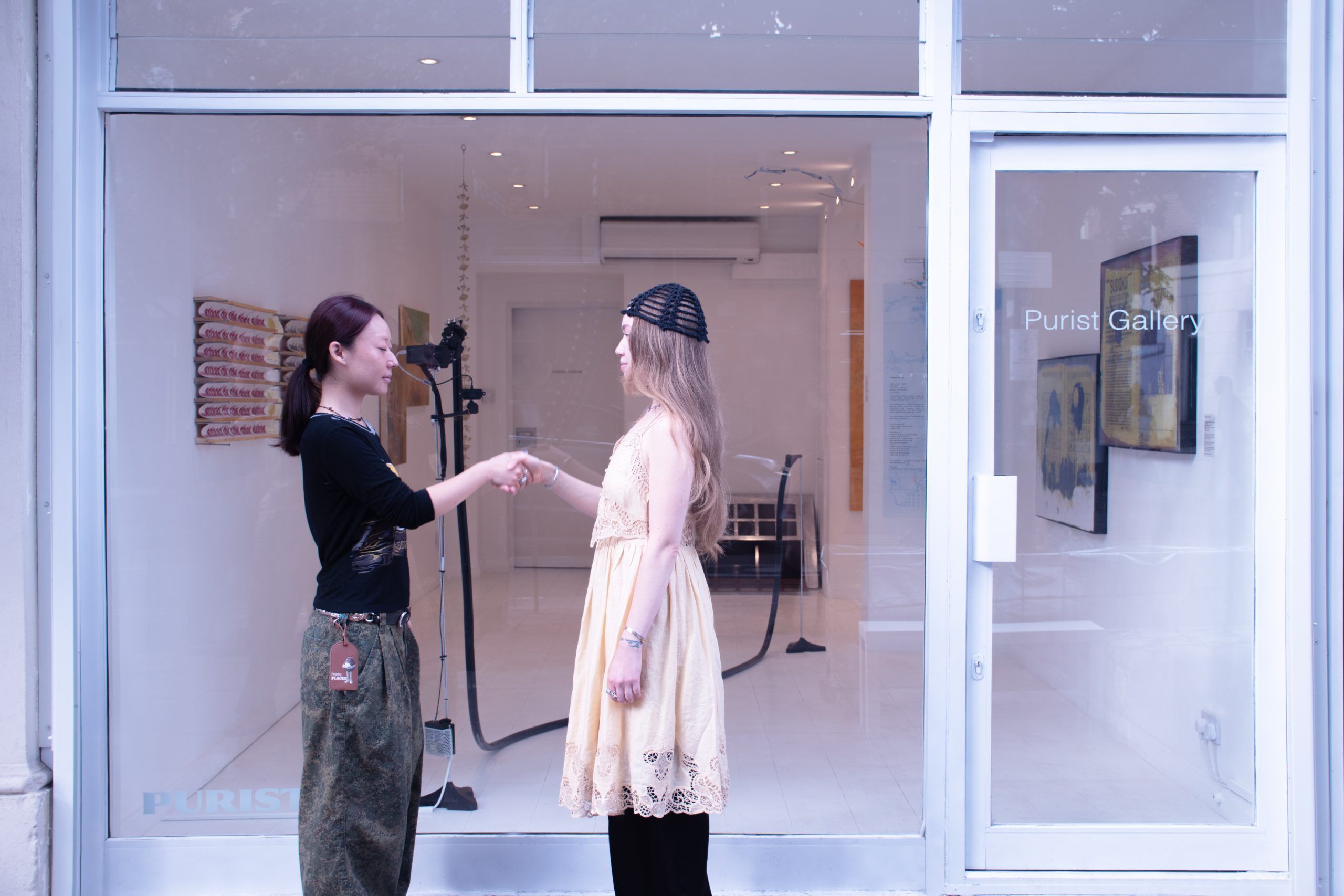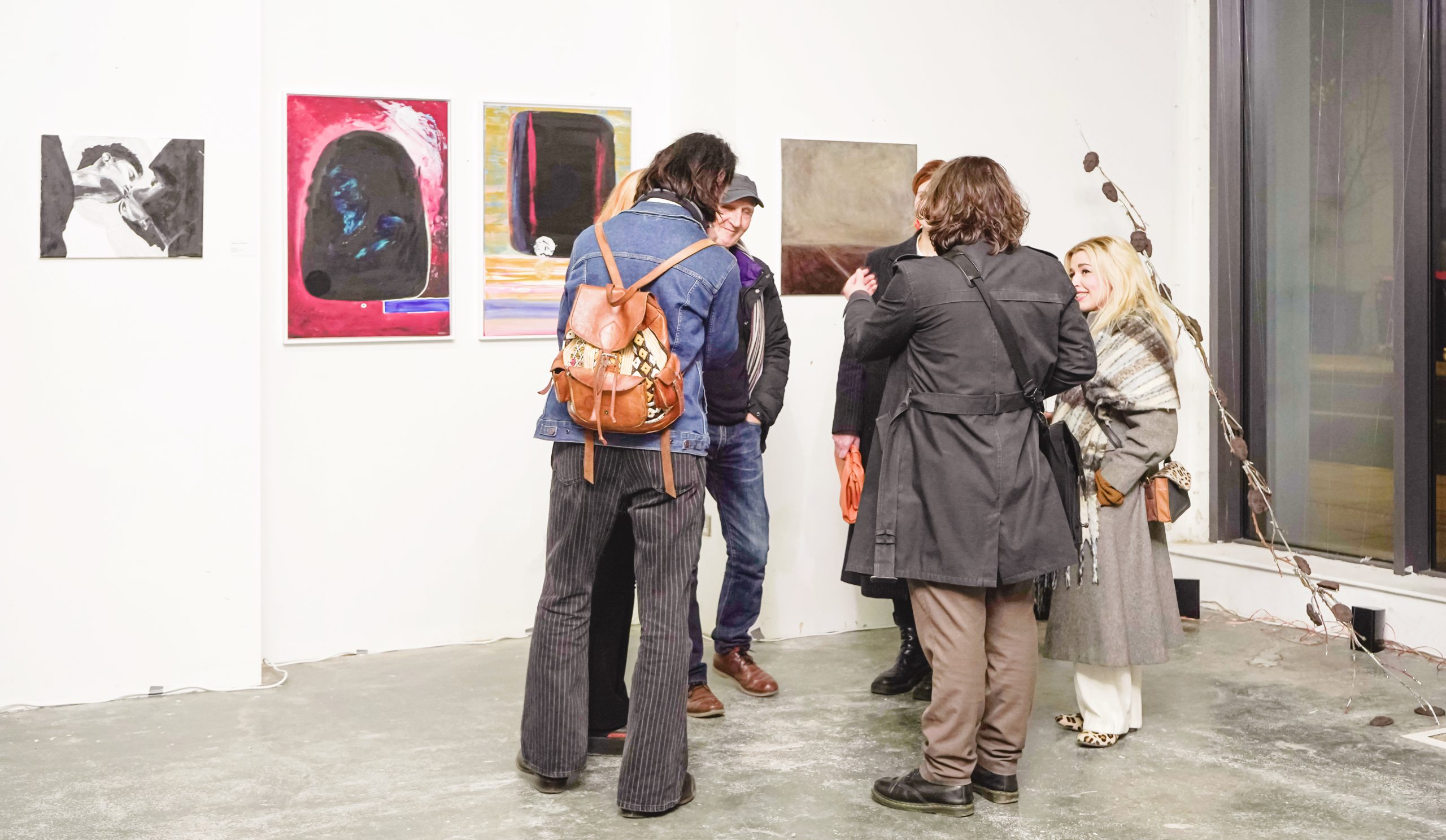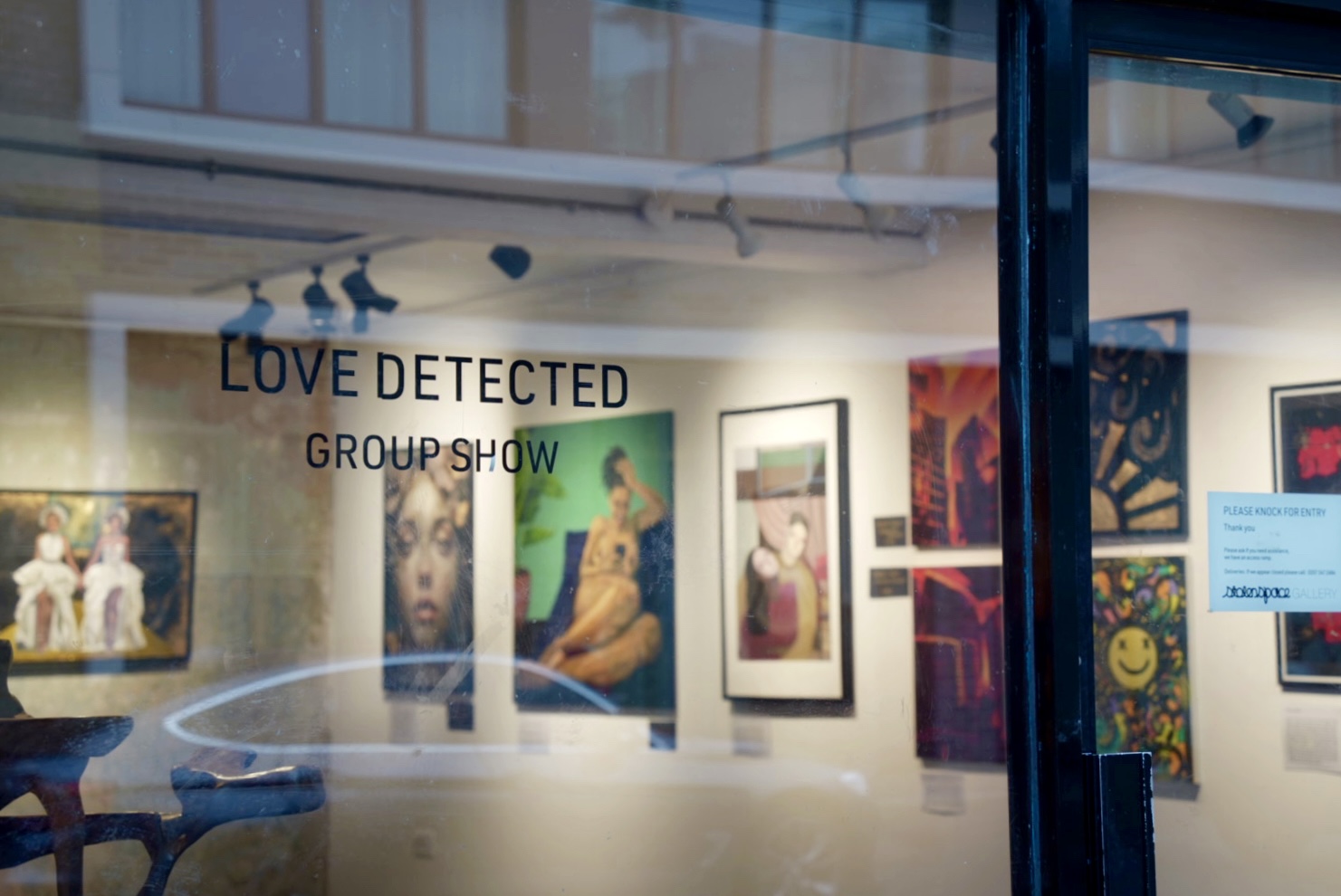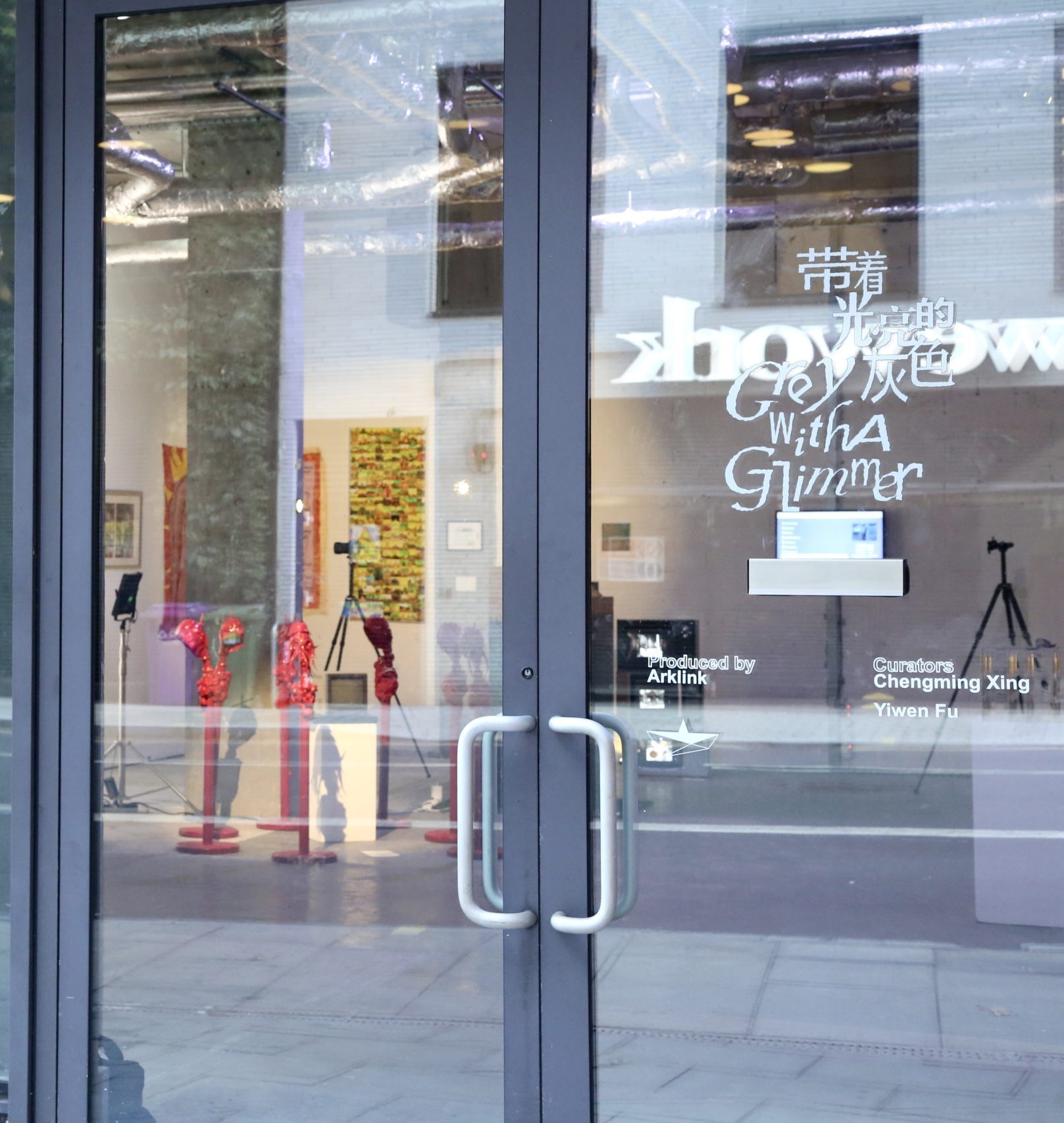In the dream that repeats itself. You’re just walking. Same tube carriage. Same flow of pedestrians. You wake up unsure if you were asleep at all.
Again, you walk-into Un-palinodic Recurrence, a group exhibition curated by Tim C Huang at Purist Gallery, not only about repetition, but a confrontation with recurrence. You sink into a loop that dares you to notice what’s never changing. The show opens with a quote from Nietzsche’s Die fröhliche Wissenschaft: “What if this life, as you now live it, you will have to live once more and innumerable times more…?” A weighty challenge; each artist responds in their own loop.
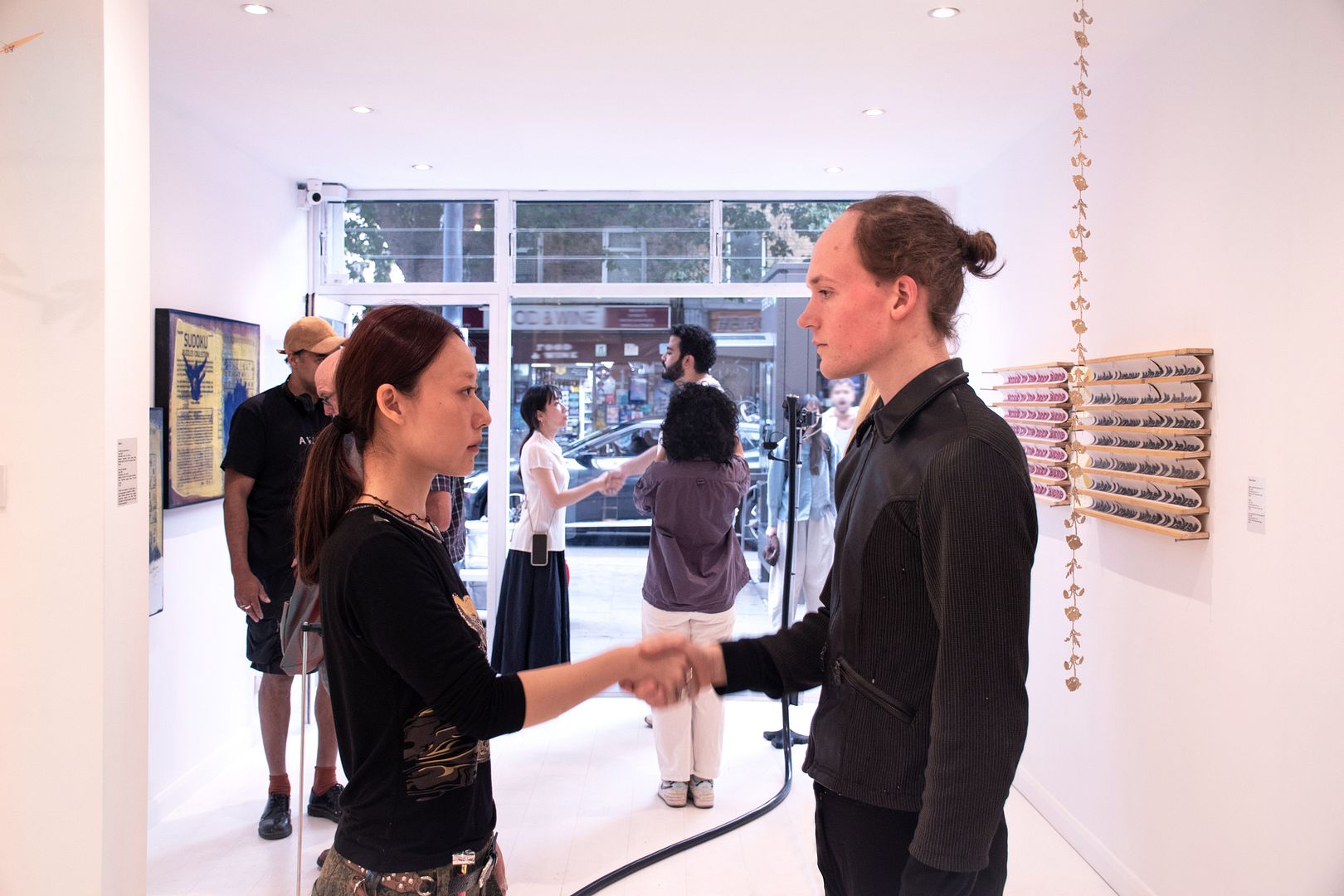
Casper Dillen’s “Again, Again, Again” (2025), Performed by: Alina R.J, Casper Dillen, Muhammad Muhammad محمد محمد, Neo Gao, Orson, Pablo Temboury, Po-Yun Kuo, Xinyue Tao, Yumin Lee, Yujie Duan. As a part of the performance, ‘The Agreement’ is created by Casper Dillen and Christy Taylor. The Dog is performed by Casper Dillen and Orson. Courtesy of the artists and Purist Gallery.
The moment you step into space, you’re not alone. Casper Dillen is already there, or at least some fragment is—jumping in place for five hours or balancing plates on the head. “Again, Again, Again” is a constellation of live actions that don’t announce themselves as performance, but instead settle into the room like micro-weather. One piece features the artist shaking hands with another performer, continuously, eyes locked. Another has him explaining the entire show—sincerely, patiently—to a dog. There’s no punchline, just the dull ache of time stretching itself out. Every action cycles. Every gesture becomes language, becomes the unnoticeable presence of breathing.
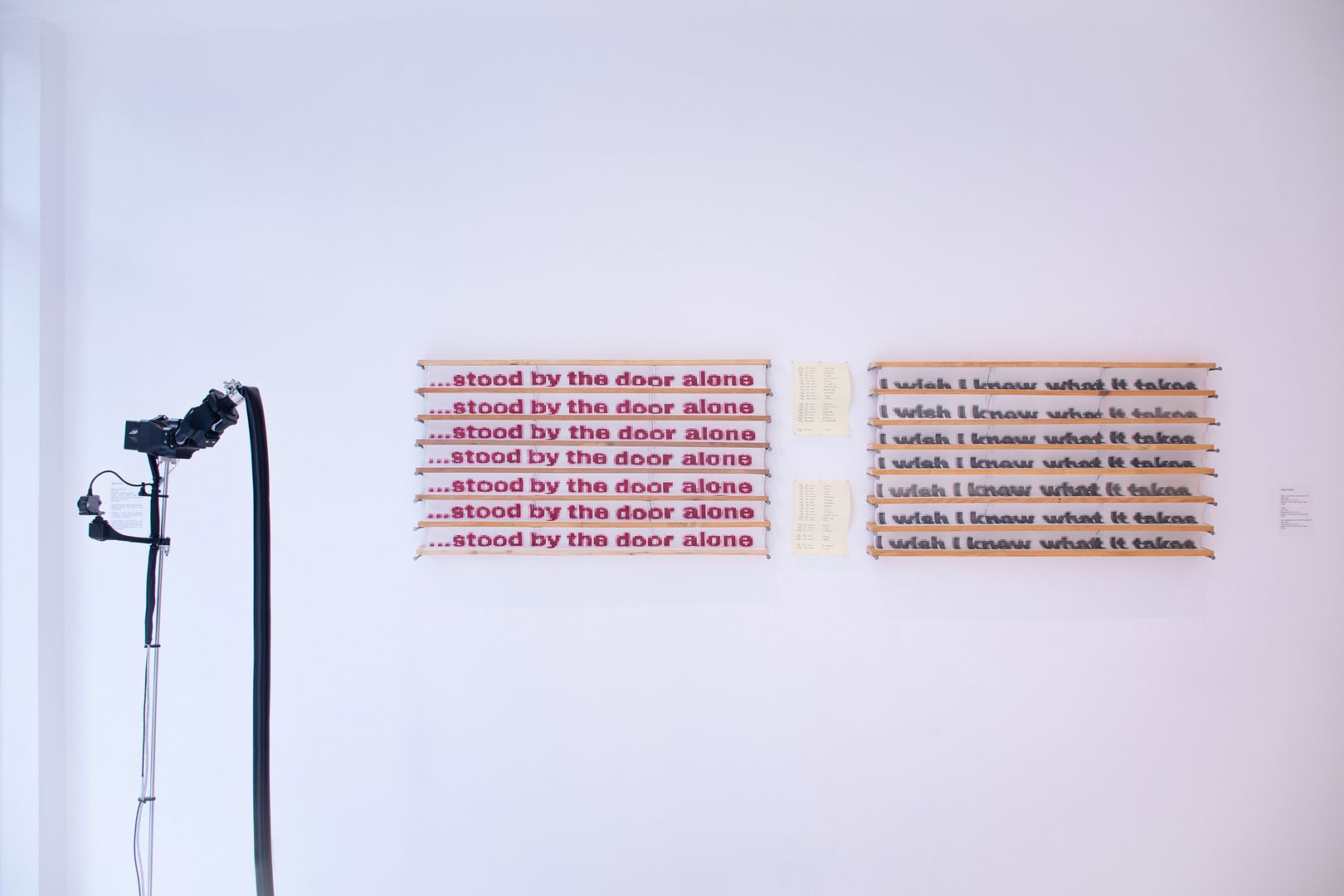
From there, as you drift deeper into the gallery, Tobias Futers’ artwork displays 15,000 hand-drawn pixels on paper, curved across planks, mounted on raw nails. “I wish I know what it takes,” the artwork whispers. The text repeats, loses clarity, then returns in red. The repetition feels both deliberate and slightly desperate — like standing in front of a room of problems. Even the structure—the planks, the balance—is just precise enough to feel precarious.
Almost melting into the floor, a soft mechanical click leads you to Jangho Yoon’s Resistance Device #2. It twitches. Pauses. React again. Built from sensors, motors, and industrial steel, it’s a machine that’s always nearly perceiving, but never quite. Operating on incomplete data — a body haunted by its own inability to see clearly. The movements are hesitant, hesitant, hesitant. Yoon’s machine is the nervous system externalised, trapped in a loop of almost-understanding.
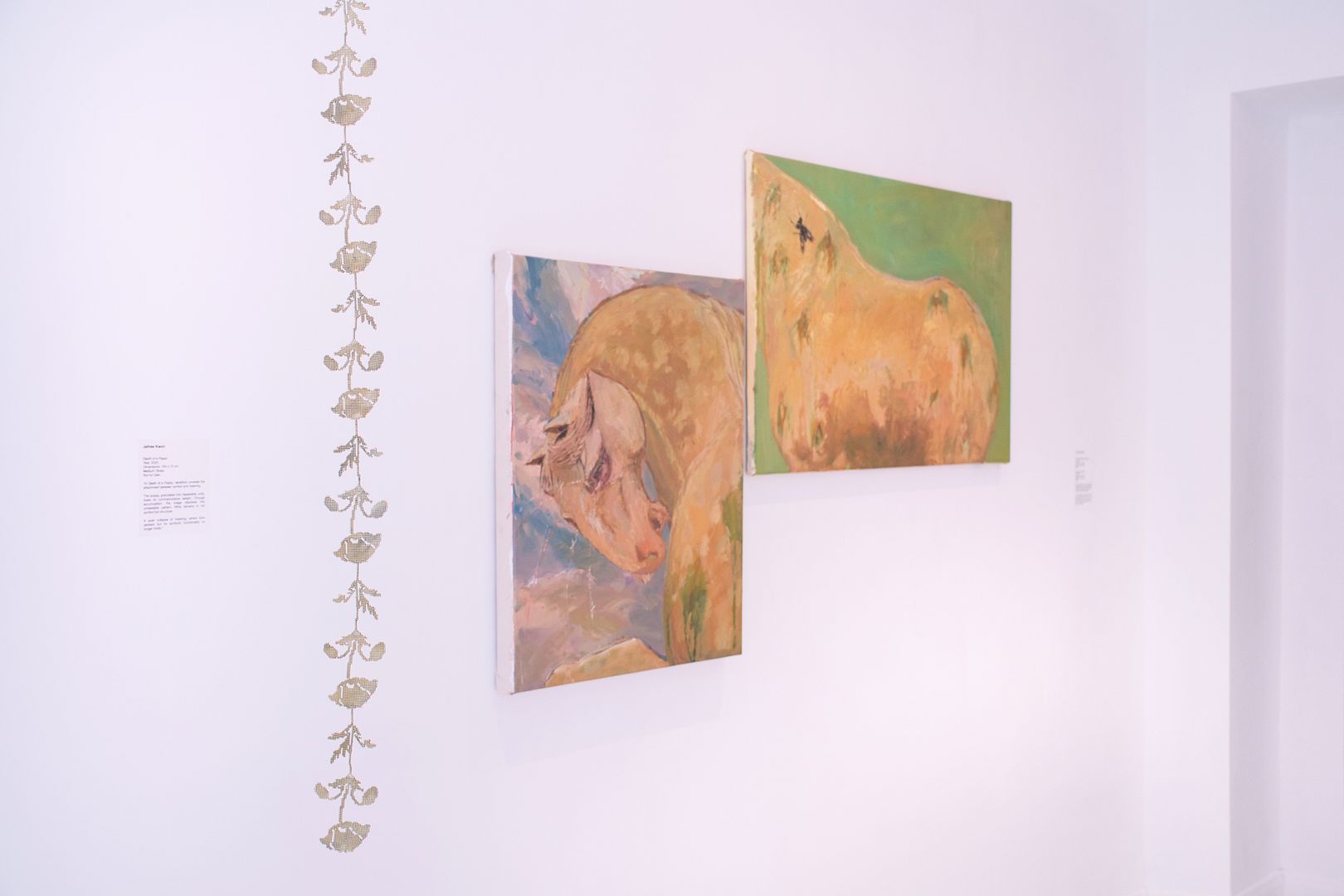
Turning your head and the texture shifts. Brass, at first glance decorative, starts to overgrow into your mind. Jeihee Kwon’s Death of a Poppy is a line of small, polished brass spheres forming petal-like patterns—somewhere between beautiful ornament and snail’s eggs. What begins as a soft nod to commemorative poppies soon collapses into a form without meaning. You know it’s a flower. Then again, maybe it’s something entirely else. Meaning leaks down slowly. You start to notice how easily symbols shed their skin.
A few steps on, you catch colour. Oils on canvas—thick, visceral—beckon with a strange gentleness. Yuyang Wei (Lily) draws you in with Milk Was Blood Before It Was Milk and Keeping Away the Flies. At first, they seem poetic—lush, painterly, glowing with nurture. But the titles give them teeth. Breast milk, we’re reminded, is made from blood. Horseflies torment a Tang-dynasty ceramic horse kept in colonial collections, that has no tail to swat them away. The violence here is intimate, historical, even maternal. Yuyang’s swift paint strokes are crying out for the horse — tenderness stings back.
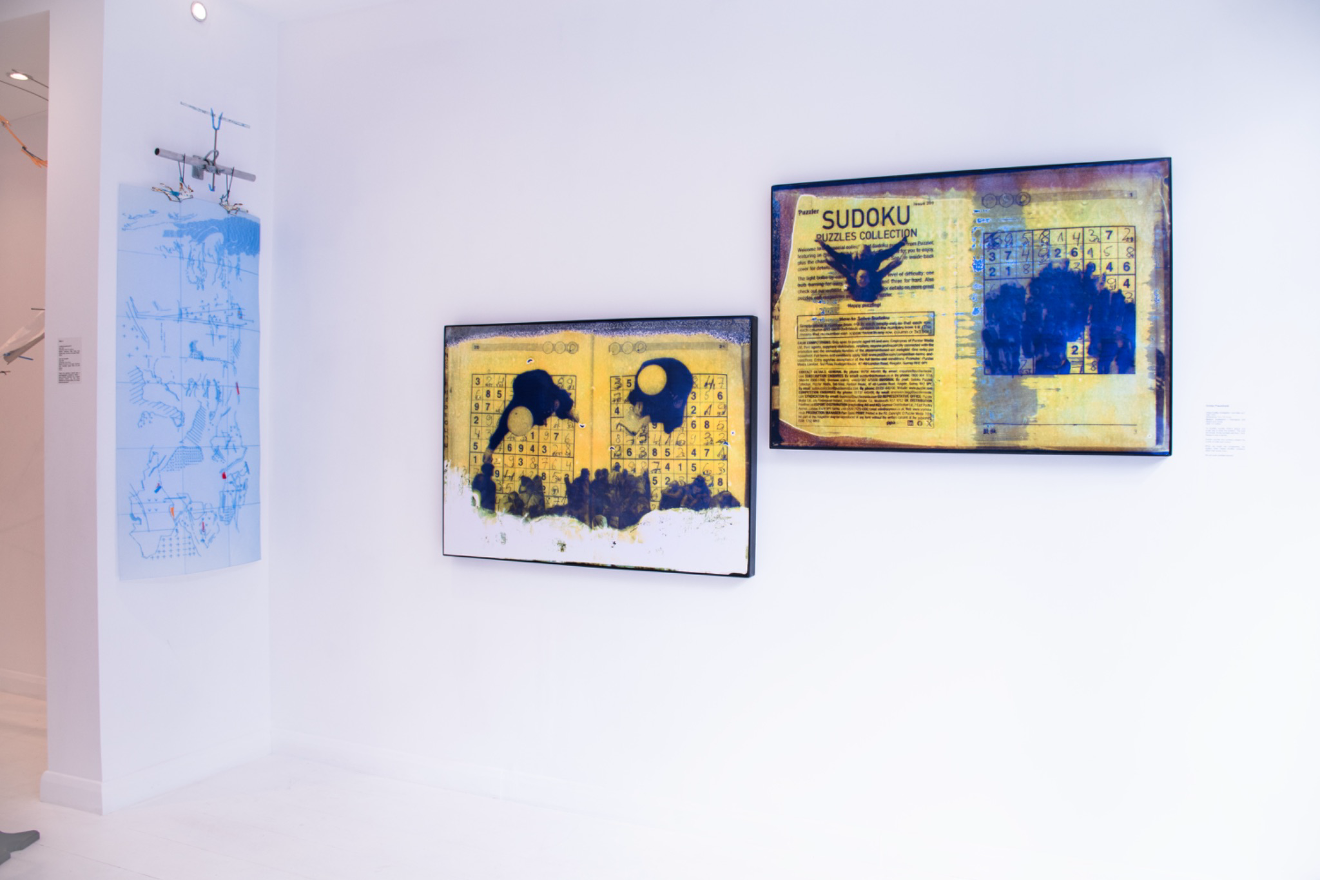
Then, you come upon Emilija Pliaukštaitė’s Happy Puzzling, Investigation 1 and Clean Up 2. Bleach, honey, and sudoku grids etched on large paper surfaces pull you into a world of obsessive logic. These pieces crackle with a dry humour — they speak of trying to solve problems with tools too blunt, too arbitrary. Emilijat writes, “We just push numbers around.” You nod. Yes. You’ve done this before. It’s the feeling of watching bureaucracy try to fix the human condition.
As the room opens up again, Zepu Li builds height. His sculptural installations — A Rather Favourable Storm II and Two Mountains — reach upward, delicately held together by unrecognizable clips. Map of fragmented mountains and scaffolding, suspended like dreamtopographies. Arrows suggest direction, but not destination. The materials feel borrowed, repurposed, patient. There’s peace — like someone from the future gently rebuilding a ruin to resemble a meditative state.
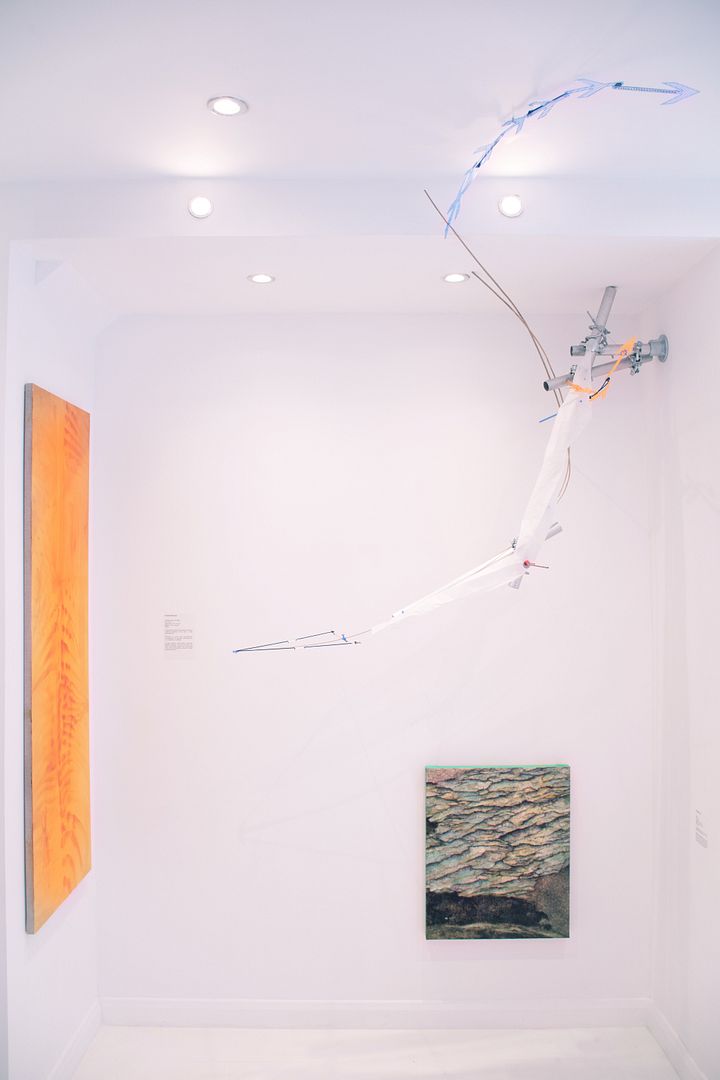
At your knees now — literally — placed unusually low, Jingshan Ding’s Shed 0 sits quietly, like a fallen tree. Layers of paint mimic bark, time, and growth. It’s all in the layering: each scratch, each line, feels like a wrinkle in something once alive. The work doesn’t speak loudly about repetition — it breathes it. A life cycle quietly rendered.
As you rise, you’re drawn to something more upright, yet equally enigmatic. Amelia Woroszyl’s Untitled Panel (The Walk) looks like it belongs in a museum of ancient wooden artefacts. Symbols drift across its surface, not quite decipherable but not unfamiliar. There’s something about memory here — its unreliability, its shape-shifting nature. The painting seems to suggest that we are all made of old signs we’ve long forgotten how to read.
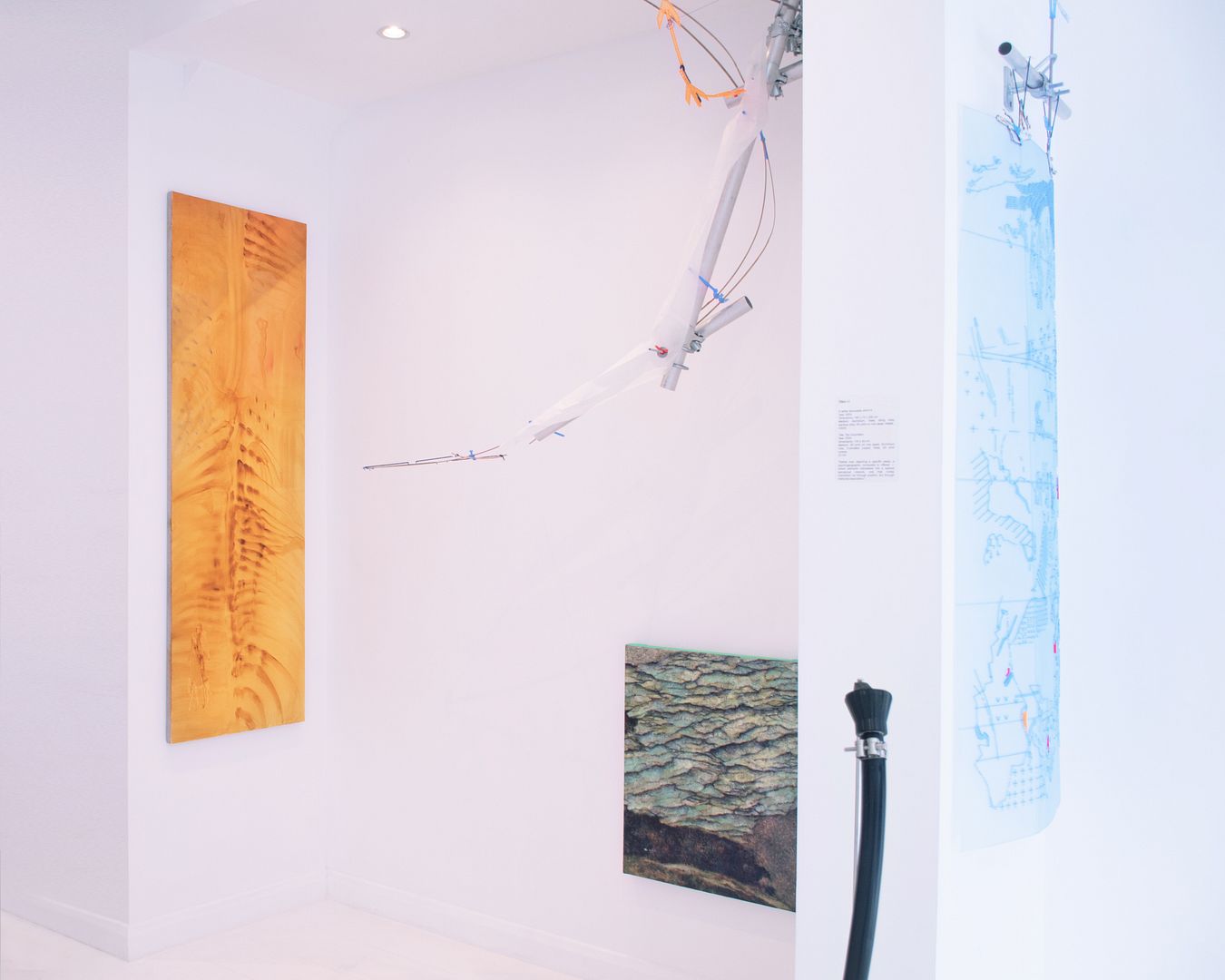
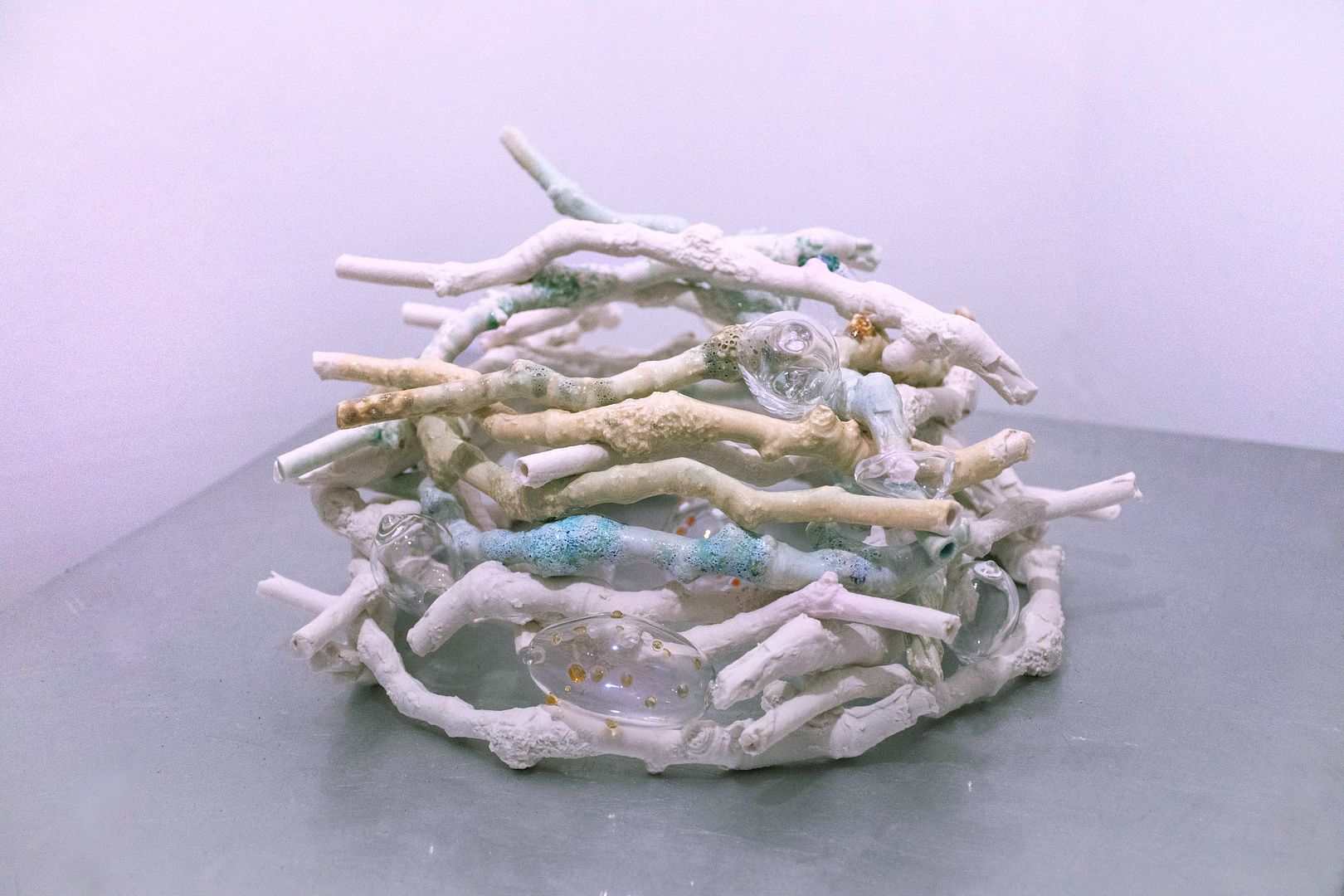
Walking along the ceramic branches of Shiying Bian’s Disrupting the Natural Flow— Awakening of Insects · First Sound, you’re reminded that time isn’t always linear. Glimmering glass bubbles nest in porcelain limbs, inspired by the Chinese solar terms. These aren’t static objects—they seem to catch breath. To quiver. They mark seasonal pulses, like the Earth itself is exhaling through clay. Slowly, out of hibernation.
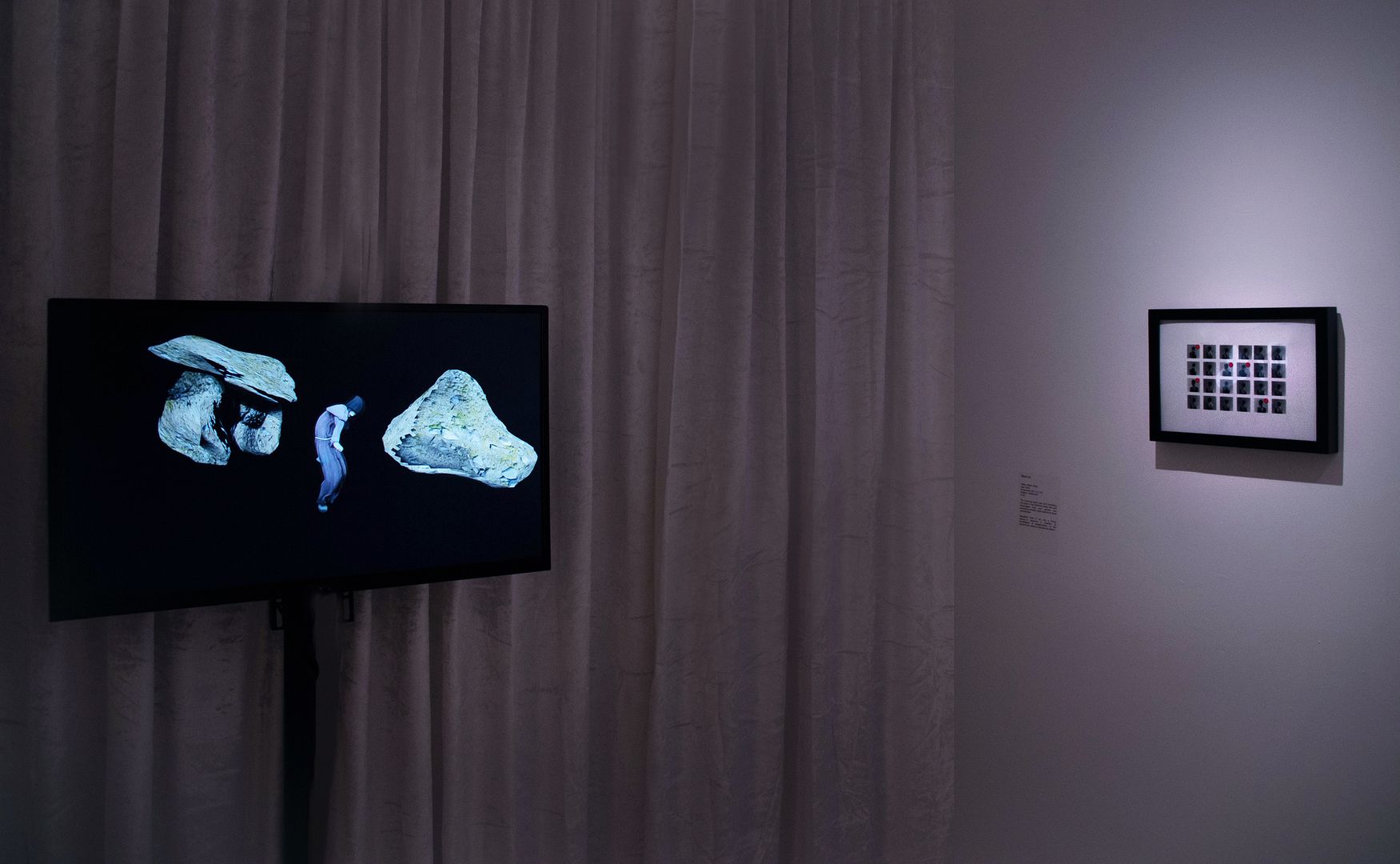
In a harmonious 3D-rendered aesthetic, Mollie Tilley’s video artwork Xeno-Fiosaiche glows like a broken spell. A lone figure dances in an endless loop — half-warlock, half-shadow — inside a pixelated landscape of crumbling rocks and abyssal black. The render is rough, the rhythm hypnotic, the soundtrack anchored by the odd twang of a jaw harp. Nothing really happens, and that’s the point. A solo ritual for no one.
From individual to multiples, Xinyi Liu’s Yellow, White, Black shows a grid of 24 backs — women photographed from behind. From a mix of ‘races’, at first glance, they look repetitive. Then, slowly, details force you to look harder; to ask why you’re noticing them. It’s a quiet confrontation with how we watch bodies, how we categorise.
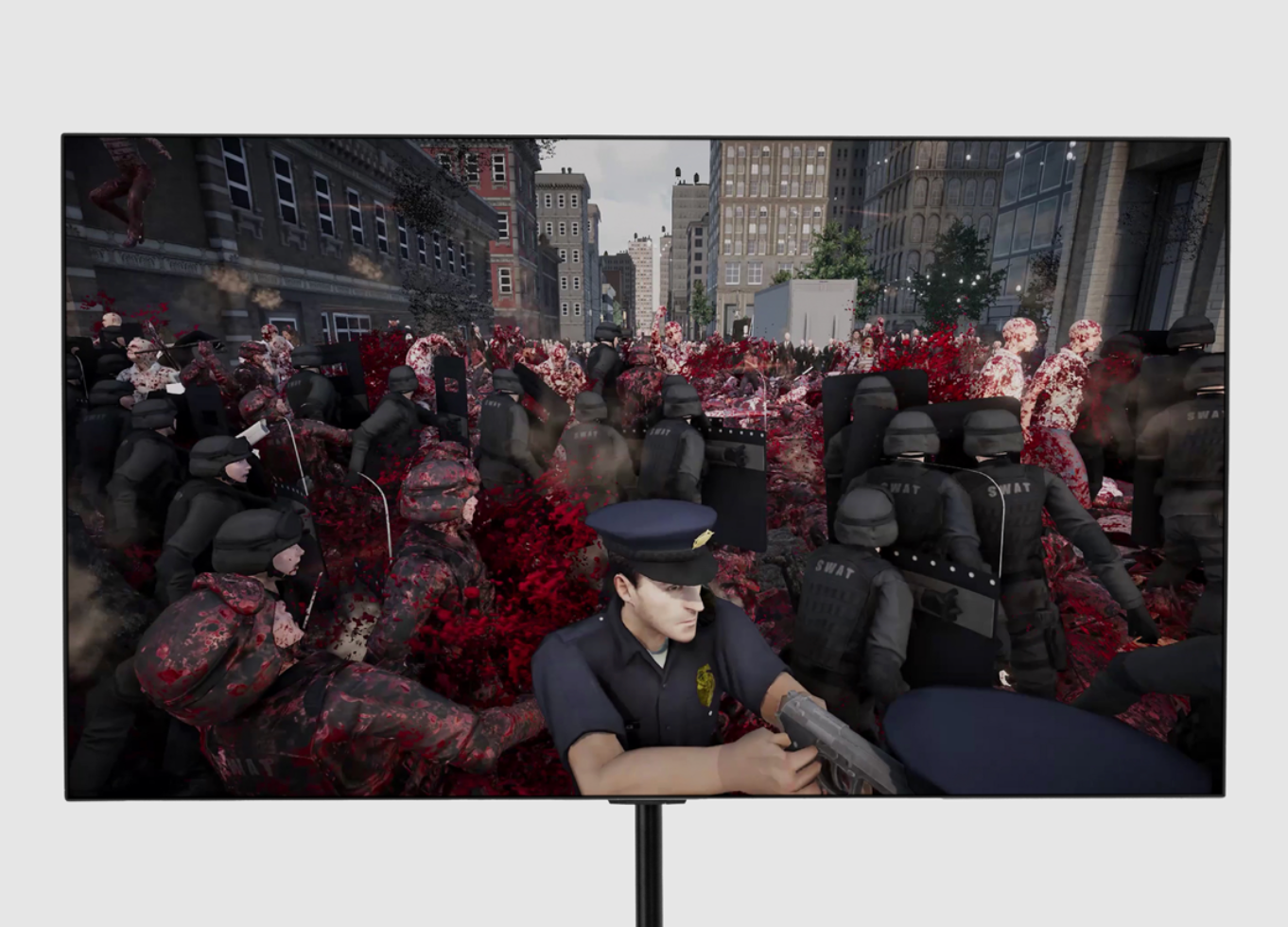
Just as things start to feel tranquil, the screen blazes to life. Rusty River by Xinhan Yu unfolds a virtual riot across the screen — glitchy, blood-red, swarmed with identical crowds of police, white-suited ‘medics’, tanks, and bunnies. Yes, bunnies. The absurdity doesn’t undercut the violence — it highlights it. Rendered in raw, game-engine graphics, this video work is a feral dream of repetitive state control, violence, and rebellion. It’s absurd, grotesque, and terrifyingly familiar. Here, recurrence becomes a scream looped into a meme.
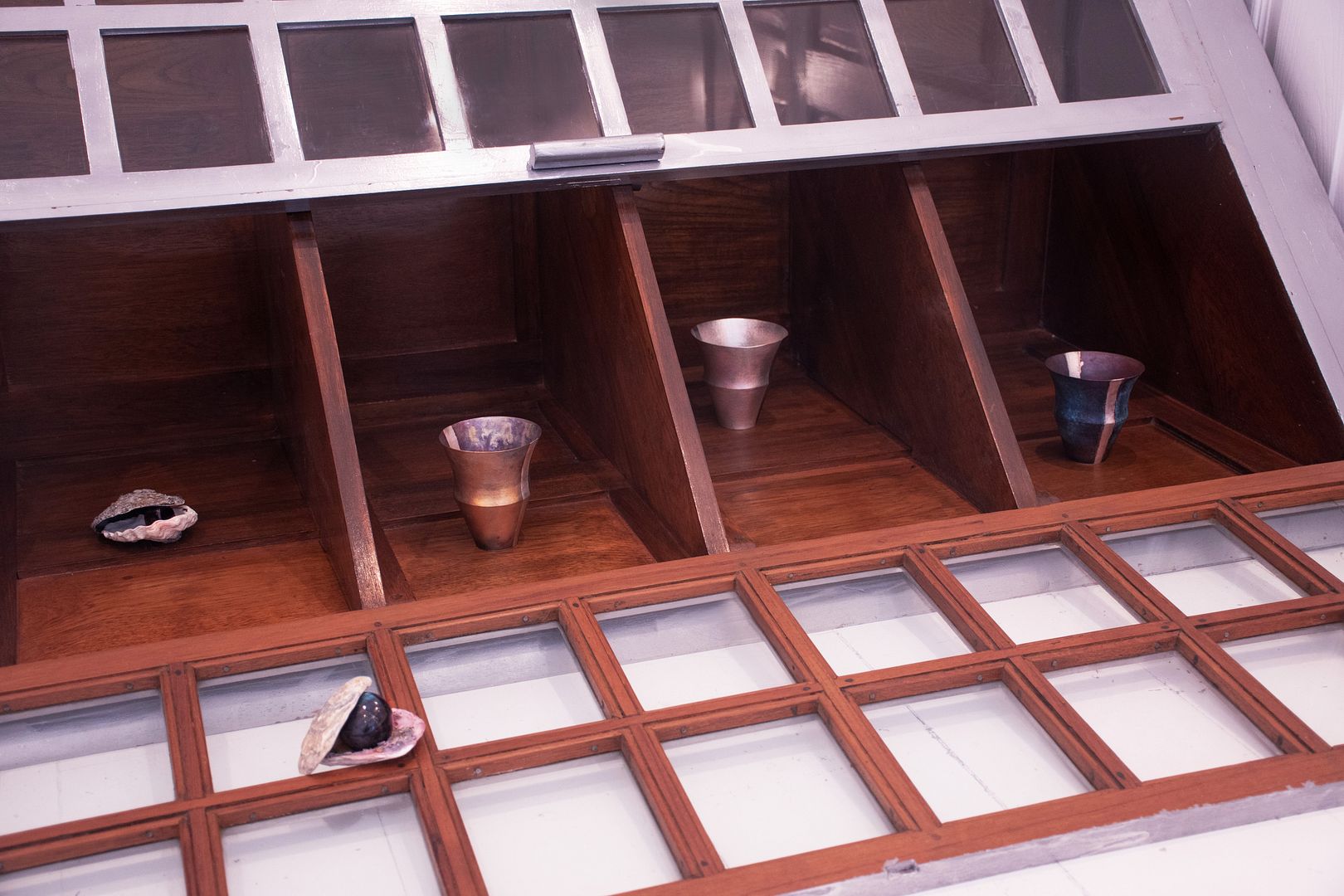
To steady yourself from that tank blast, you land on Xiang Li’s sculptural pieces in A Goodwill Gesture that seem to glow without light. Made from crystals, shells, herbs — they don’t declare. They resonate. You don’t look at them so much as feel them. You wonder how long it took to form these stones. How many cycles of tide and time. What memory feels like, if not this. Youyang Zhao’s Dulity series — hammered cups in precious metal — are brutally elegant. The hammer marks begin to speak. There’s nothing metaphorical about repetition here — it’s literal. Maybe Youyang is answering to the core: If you had to present the same artwork over and over again, endlessly — how would you create it?
Un-palinodic Recurrence doesn’t just curate art that repeats — it curates art that endures. That tests what it means to return. In doing so, it suggests that maybe life’s not about escaping the loop. Maybe it’s about learning how to live inside it — sharper, softer, and just awake enough to notice the next time it begins again.
You’re just walking. Same tube carriage. Same flow of pedestrians. You wake up unsure if you were asleep at all. Again…

